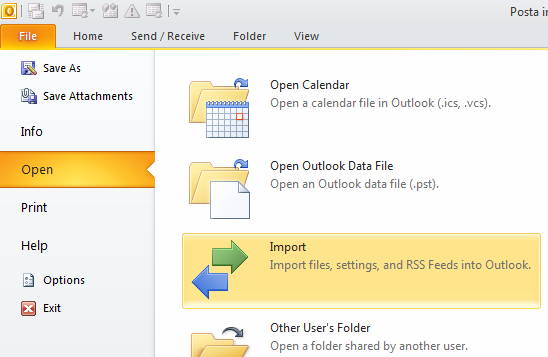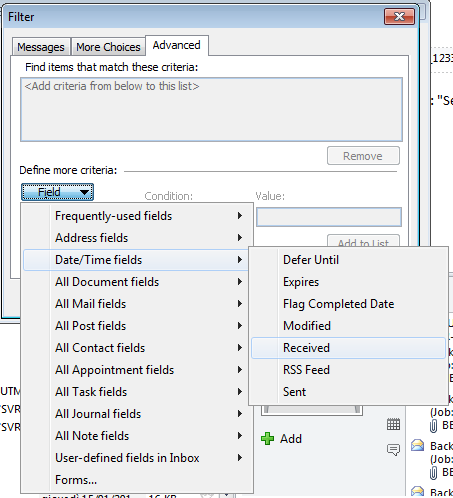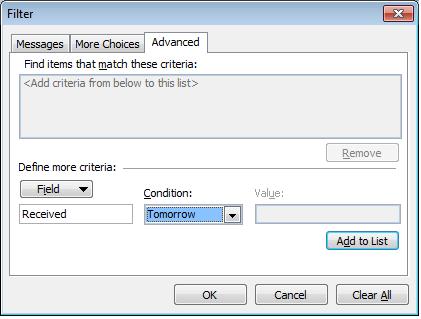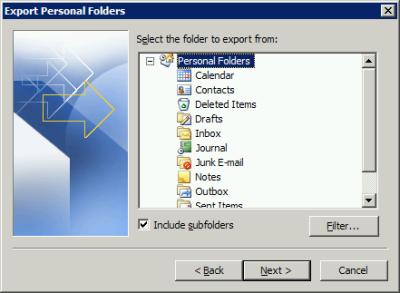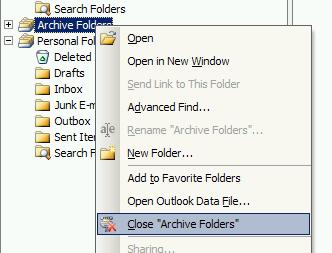To totally unlock this section you need to Log-in
Login
The short way
To quickly copy structure of a folder's mailbox (or the whole structure) you can read the following steps.
First, open the Import/Export module in Outlook (2010, in the example):
Then, choose Export to a file, then Outlook Data File (.pst) and finally select the folder you want to replicate (remembering to keep checked the Include subfolders option.
The continue the process by clicking on the Filter... button and choose the Advanced tab.
Continue by choosing, on menu Field, the Date/Time entity and then choose Received:
Now configure the filter by using, as condition, Tomorrow (this will instruct to filter all mails by date, in practice it'll not export anything but folder structure, no items (emails, etc.):
You'll be prompted to be sure about adding this filter: obviously click Yes to apply this filter to the extraction process, then continue clicking Next and choose a location to save the final .pst file.
After this little procedure you'll only to add the new, emails-free, .pst file into your Outlook and you'll see that the new entity will reflect your selected folder with subfolders, but they'll be empty.
Obviusly you won't need to recreate it every time, but you'll have only to copy the .pst to save it on your backup device or to share it with collegues (for example).
The long way
If you’ve been using Outlook for some time, you’ve probably got a folder structure that works for you. And you probably also have a lot of email that could be archived out of your mail storage file.
Unfortunately, Microsoft’s all-or-nothing solution to the issue – AutoArchiving – is quite limited. You can only archive items by their date. You can’t, for instance, tell Outlook to archive all 6 month old emails except categorized ones. Nor can you tell Outlook to archive all emails except this or that folder. You could always copy emails to a new data file manually, but that would mean recreating the folder structure, which can be a lot of work.
Wouldn’t it be nice if you could replicate your folder structure in a new data file, and move older emails to it as needed?
You can, and it’s a simple, if drawn out, process:
- Open Outlook and click “File” > “Import and Export”.
- Choose “Export to a file”, and then click “Next”.
- Choose “Personal Folder File (.pst)”, and then click Next.
- On the next screen, select the top of the hierarchy (usually listed as “Personal Folders”) and make sure that “Include subfolders” is checked, and then click “Next”.
Choose a unique name for the new data file (such as “outlookfolders.pst”) as well as a location for the new data file (such as the Desktop), and then click “Finish”.
If you see an additional screen called “Create Microsoft Personal Folders”, just click “OK”.
Depending on the size of your email archive and the speed of your computer, this process can take anywhere from 30 seconds to 45 minutes or more.
When the export is complete, click “File” > “Open” > “Outlook Data File”, and open the PST file you just created. Now complete the following steps:
- Click “File” > “Archive”.
- Click the top folder of the new data file you created in the first step (it might have a different name, or a different icon than your mail file). It’s important to select the correct file here, as we will be moving everything out of this file.
- Put tomorrow’s date in the “Archive items older than” box.
- Make sure that the “Include items with Do not AutoArchive” box is checked.
- Click the “Browse” button and choose a unique name and location for the archive PST file. I recommend “temparchive.pst”, but you can choose whatever you'd like.
- Click “OK”. You might get an error message because you selected a date in the future; ignore this, as we know what we’re doing here.
Outlook will now move all data from the copy of your mailbox we made in section 1 to another PST file, copying your folder structure in the process. When the process is complete (which will take as long as the export you did in first step, Outlook will automatically mount the new AutoArchive file as “Archive Folders”. Right-click the file and choose “Close Archive Folders”.
Outlook’s data files are actually databases, and like most other databases, PST files won’t automatically decrease in size just because you delete all the data from them. In other words, if you have a 500MB PST file and delete everything in it, the file will still be 500MB after the delete. To compress the PST file you created in step 1, do the following:
- In Outlook, right-click the PST file you created.
- Choose “Properties” then click the “Advanced” button.
- Click “Compact Now”. Depending on the size of your PST file and the speed of your computer, this can take anywhere from 1 minute to an hour or more.
- When the compact is done, click “OK” twice.
- Right-click the new PST file in Outlook and choose “Close [Personal Folders]”.
- Close Outlook, and delete the “temparchive.pst” you created. You can also move or rename the empty PST file you created in section 1.
You can now use the blank PST file as an archive, as it is empty, but has your existing folder structure. You can also copy the new PST file to other computers, if one of your co-workers would like to replicate your folder structure.
